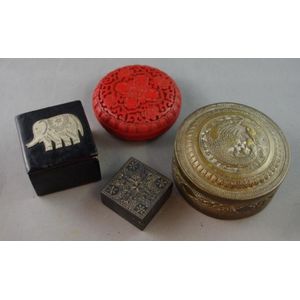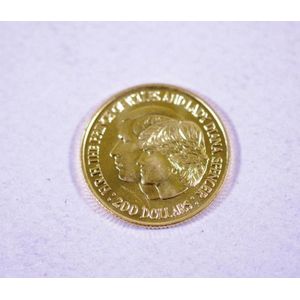Victorian Lilly of the Valley Locket
You must be a subscriber, and be logged in to view price and dealer details.
Subscribe Now to view actual auction price for this item
When you subscribe, you have the option of setting the currency in which to display prices to $Au, $US, $NZ or Stg.
- Foliate - Decorated with leaves or leaf-like forms.
- Victorian Period - The Victorian period of furniture and decorative arts design covers the reign of Queen Victoria from 1837 to 1901. There was not one dominant style of furniture in the Victorian period. Designers used and modified many historical styles such as Gothic, Tudor, Elizabethan, English Rococo, Neoclassical and others, although use of some styles, such as English Rococo and Gothic tended to dominate the furniture manufacture of the period.
The Victorian period was preceded by the Regency and William IV periods, and followed by the Edwardian period, named for Edward VII (1841 ? 1910) who was King of the United Kingdom and the British Dominions and Emperor of India for the brief period from 1901 until his death in 1910. - Cartouche - An ornamental panel in the form of of a shield, oval or rectangular scroll with curling edges. It may be carved into the back of a chair or the top of a sideboard, or present on a piece of silver or jewellery, and contain the initials of the original owner, heraldic symbols, or some other inscription, such as the details of a presentation.
In ceramics the term defines the central area of a vase or similar with a decorative border in one of the shapes above, into which a decorative scene or figures have been painted. - Rolled Gold - A type of gold plating devloped in the early 19th century, similar to Sheffield plating of silver, where the the gold is fused under pressure and heat to a base metal, usually brass, and then rolled into sheets of the required thickness.
The thickness of the gold plate can vary. In Britain the thickness of the gold is measured in microns. A micron is one-thousandth of a millimetre and 20 microns of gold is considered good quality. In the USA a differnt method is used that takes account of the total weight of the object.
Also, the purity of the gold, measured in carats can vary, with 24 carat being the purest. The gold in most rolled gold objects will be between 9 and 14 carats.
There are other chemical and electroplating methods of applying gold plate to a base metal, but rolled gold is considered a superior plate to a "gold plated" object.
Depending on the country and date of manufacture, the object may be stamped "Rolled Gold" or similar, but if there is any doubt as to whether an object is solid gold, or some type of gold plating, it is preferable to have it tested by a jeweller.
This item has been included into following indexes:
Visually similar items

Four various vintage Oriental trinket boxes, to include a lacquer, brass, cinnabar and another decorative metal box

An emerald and diamond set oval plaque ring, 14ct white gold, antique styled as a low oval plaque ring of intricate design, set with central brilliant cut diamond of approximately 0.10ct, framed by a fine inverted kite shaped frame, set with channel set em

RAM 1981 Royal Wedding $200 gold coin, in original wallet. Weight 10 grams.

Enamel and seed pearl pocket watch, French origin
